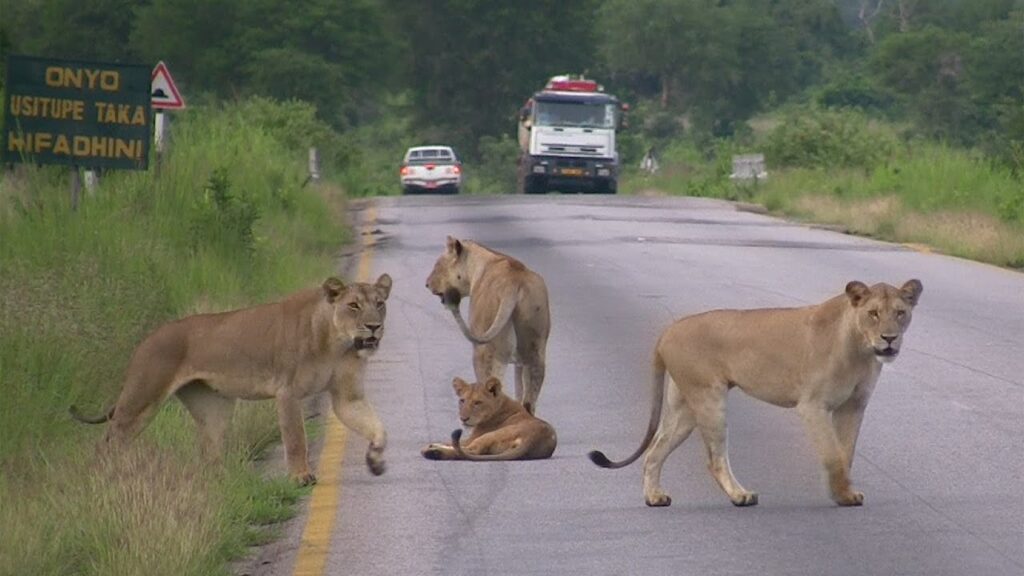Best Self Drive to Mikumi National Park
Mikumi National Park is a highly rewarding safari destination in Tanzania and is recognized as one of the premier locations for game viewing in the country. It is the most accessible national park in Tanzania, situated 288 kilometers west of Dar es Salaam and 107 kilometres from Morogoro. The park can be accessed via a highway that traverses through it, extending 50 kilometres from Dar es Salaam to Iringa in Southern Tanzania.
Mikumi National Park geographically adjoins the Selous Game Reserve, Udzungwa Mountains National Park, and the Uluguru Mountains, including an area of 3,230 square kilometres, so ranking as the fourth largest national park in Tanzania. The park encompasses the Malundwe Mountains, the highest range of hills extending east and west, which also links the Uluguru Mountains to the north-east with the Uvidunda and Udzungwa mountains to the west. Malundwe Mountain features three peaks along its north-south ridge, with the southern peak being the highest point in the park at an elevation of 1,290 metres.
The park features many vegetation types, including Miombo woodlands, wetlands, open grasslands, and riverine forests, which support a significant concentration of wildlife and avian species. Mikumi National Park is home to a diverse array of fauna, including wild dogs, elephants, giraffes, hartebeests, zebras, leopards, lions, impalas, sable antelopes, warthogs, waterbucks, wildebeests, reedbucks, yellow baboons, crocodiles, hippos, and numerous more species. Mikumi National Park boasts an avian population exceeding 400 species, rendering it an exceptional destination for birdwatching in Tanzania. Notable species within the park include the African hawk eagle, African grey hornbill, African openbill, cardinal woodpecker, green wood-hoopoe, long-tailed fiscal, malachite kingfisher, Mariqua sunbird, northern carmine bee-eater, northern pied babbler, pale batis, pale-billed hornbill, red-billed oxpecker, Shelley’s sunbird, southern ground hornbill, purple-crested turaco, yellow-throated longclaw, among numerous others.
Activities in Mikumi National Park
Wildlife observation
The park is an exceptional location for a Tanzania game viewing safari, serving as a habitat for numerous mammalian species observed throughout the safari. Game viewing in Mikumi National Park occurs along various circuits, particularly around the Mkata floodplain and hippo pools. During a game drive safari, one can anticipate remarkable sightings of hippos, buffaloes, elephants, zebras, giraffes, warthogs, lions, leopards, spotted hyenas, Liechtenstein’s hartebeest, yellow baboons, and numerous other species.

Bird watching
Mikumi National Park is an avian sanctuary, ideal for birdwatching safaris in Tanzania, housing over 400 recorded bird species. While on a birdwatching safari, one may encounter numerous exquisite species, including the African hawk eagle, African grey hornbill, African openbill, cardinal woodpecker, green wood-hoopoe, long-tailed fiscal, malachite kingfisher, Mariqua sunbird, northern carmine bee-eater, northern pied babbler, pale batis, pale-billed hornbill, red-billed oxpecker, Shelley’s sunbird, southern ground hornbill, purple-crested turaco, yellow-throated longclaw, among others.
Walking safaris
The park provides exceptional walking safaris in Tanzania, allowing exploration of its stunning natural landscapes. These safaris are conducted on foot under the supervision of an armed ranger for safety, utilising three designated trails: Vuma Hills Trail, Kikoboga Trail, and Mikumi Wildlife Lodge Trail. While traversing the savannah grasslands of the park, travellers relish observing many creatures, including zebras, giraffes, elephants, buffaloes, hippos, warthogs, and several avian species such as malachite kingfishers, yellow-throated longclaws, lilac-breasted rollers, among others.
Picnic and camping
Picnic and camping safaris provide exceptional experiences in Mikumi National Park, with picnic safaris available at three designated sites: Mbuyuni, Millennium, and Mwanambogo. Picnics in Mikumi National Park offer an exhilarating experience, allowing one to savour delectable meals amidst stunning natural surroundings. Food is transported into the park in lunch boxes. Camping in the park provides an excellent opportunity to engage with nature, sleep beneath the stars, and hear the sounds of various nocturnal animals, such as lion roars. This experience occurs in approved public and special campsites.
Cultural excursions
The park serves as an exceptional locale for cultural safaris in Tanzania. Cultural tours in Mikumi National Park occur in adjacent villages, providing an excellent opportunity to experience traditional dances, sample local cuisine, visit markets, engage with elders, and stroll through the village to observe farms, traditional dwellings, and more.
Accommodation options in Mikumi National Park
Accommodation in the park is available through lodges and campgrounds, categorised as luxury, midrange, and budget options.
Opulent lodging options in Mikumi Park comprise Stanley’s Kopje Camp and Vuma Hill Tented Lodge.
Midrange lodging options in Mikumi Park comprise Mikumi Wildlife Camp and Angalia Tented Camp.
Budget accommodations in Mikumi Park comprise Mikumi Safari Lodge, Tan-Swiss Lodge, public campsites No. 1 and No. 3-5, as well as the exclusive Chogwale Campsite.
Directions to Mikumi National Park
The park is accessible via three modes of transportation: road, air, and rail.
Mikumi Park is predominantly accessed via multiple routes from Dar es Salaam, Morogoro, and Iringa, with the most utilised route being the highway connecting Iringa to Dar es Salaam. Mikumi Park may be accessible from neighbouring national parks, including Selous Game Reserve, through the Pwaga and Mahondo ranger posts, which lead to the park’s main entrance.
Domestic chartered flights are available from Julius Nyerere International Airport to the airstrip located at Kikoboga, near the park’s headquarters.
Travel by train from Dar es Salaam to Man’gula, then proceed to the park.
